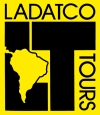Paz soon converted the then 3,000-acre ranch into a sprawling, 5,000-acre botanical garden designed by his friend, the late landscape artist Roberto Burle Marx. The project began when Brazilian contemporary artist Tunga persuaded Paz to start collecting contemporary art. Eventually, he allowed artists all the space and resources they needed to create larger-than-life works. The garden, which boasts two dozen art “pavilions”, opened to the public in 2006. The pavilions include more than 500 works by noted Brazilian and international artists, such as Hélio Oiticica, Yayoi Kusama, Anish Kapoor, Thomas Hirschhorn, Dominique Gonzalez-Foerster, Steve McQueen, Cildo Meireles and Vik Muniz.One pavilion is devoted to one of Paz′s ex-wives, the Brazilian artist Adriana Varejão.
In 2008, a geodesic dome designed by Paula Zasnicoff Cardoso of the Brazilian architectural practice Arquitetos Associados, was constructed within a eucalyptus forest and now contains Matthew Barney's installation De Lama Lâmina [From Mud, a Blade] (2004–08), which shows a vehicle uprooting a tree. Chris Burden’s Beam Drop (1984/2008) is made of 72 steel beams dropped 45 meters from 150-foot-high cranes into a pit filled with wet cement. Sonic Pavilion by Doug Aitken was realized in 2009 and consists of a circular building of frosted glass on top of a hill which contains a well. This goes down 200 meters into the ground and at its bottom microphones capture the sounds of the earth which are then amplified and played live in the gallery above. Vegetation Room (2012), by Cristina Iglesias, is a cube of polished stainless steel reflecting the surrounding forest. Visitors slip into crevices where the walls are sculpted foliage, entering a labyrinth within the labyrinth; at the cube's heart, torrents of water periodically rush.
In 2011, Inhotim joined the Brazilian government's official botanical garden association, and the staff has begun an inventory of its 4,500 plant species, including 1,300 types of palm alone. There are greenhouses for unusually rare plants.
Inhotim, now at 5,000 acres, is vast enough to require 1,000 employees. Jochen Volz has been the artistic director since 2004. Paz has plans to expand Inhotim with 10 or more new hotels, an 15,000-capacity amphitheater, and even a complex of “lofts” for those who want to live amid the collection.







